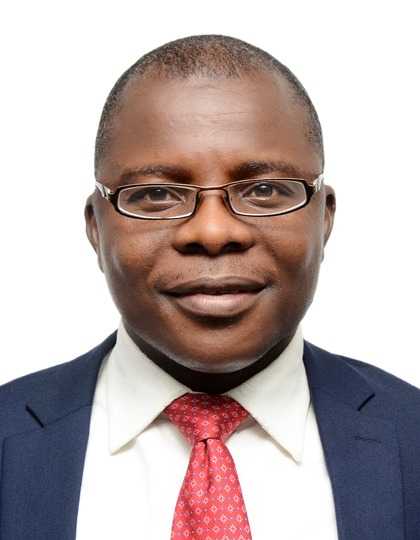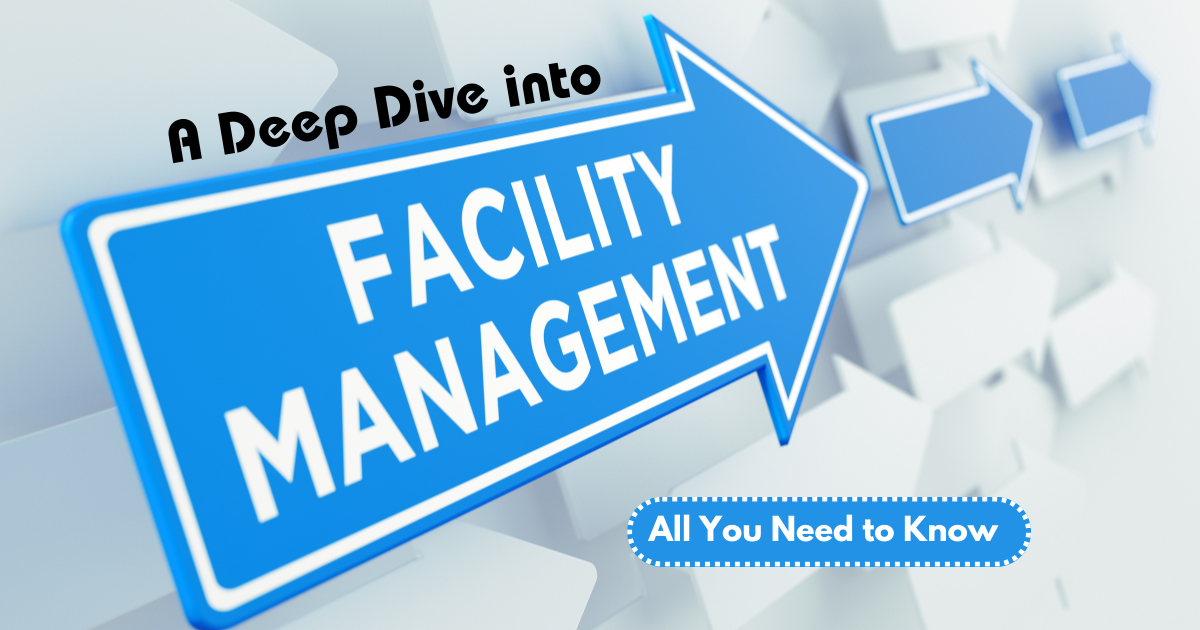Table of Contents
Introduction
Think about your favourite song playing flawlessly at a concert. The lights, sound, and atmosphere are all in sync to create an unforgettable experience. Another perfect example would be your apartment complex or office. Ever wondered how these places run smoothly? This is handled by the Facility Managers.
What is Facility Management?
Facility management refers to the strategic and systematic administration of an organisation’s physical assets, infrastructure and services for the optimal operation of its built environment.
It encompasses activities designed to maximise functionality, safety and overall performance across buildings, equipment, utilities and surrounding grounds while minimising costs and risks.
It also includes daily operational planning and long-term plans focused on upkeep & improving the different types of facilities being managed as key facets.
In simpler terms, here is how we would describe facility management:
Just like you tidy up your room, facility managers tidy up the places where people work. They fix things, make sure everything’s safe, and plan for the future.
They make sure the spaces fit the company’s needs, and they do it in a way that saves money and keeps everyone safe. And it’s not just about making things work within a defined space; it’s also about ensuring people are safe and happy.
In a nutshell, facility management is focused on helping organisations succeed by caring for their spaces, people, and everything in between.
Types of Facility Management Services
Different facility management services cater to specific facets of overseeing an organisation’s built environment and resources. These distinct types are designed to meet various needs across different industries and organisational setups. Here are some common types:
1. Hard Facility Management (Hard FM):
Hard FM revolves around meticulously managing physical assets and systems within a facility, such as buildings, equipment, and infrastructure. Key responsibilities include ensuring the proper maintenance, timely repairs, and effective management of technical services.
This can span a broad spectrum, ranging from HVAC systems (heating, ventilation, and air conditioning) to plumbing, electrical systems, and even elevators.
2. Soft Facility Management (Soft FM):
In contrast to the hardware-focused Hard FM, Soft FM centres on managing services and processes that contribute to occupants’ overall well-being, comfort, and productivity.
From cleaning and security services to catering, waste management, landscaping, and pest control, Soft FM ensures that the environment remains pleasant and conducive for occupants.
3. Integrated Facility Management (IFM):
Integrated Facility Management (IFM) represents a comprehensive approach integrating Hard FM and Soft FM services. Under this type, a single service provider manages various aspects of facility operations.
This integrated approach leads to streamlined operations, enhanced cost-effectiveness, and improved coordination between different aspects of facility management.
4. Outsourced Facility Management:
In this approach, organisations delegate facility management responsibilities to external service providers. This allows organisations to focus their energy on core business activities, leaving facility-related tasks in the hands of experts.
5. In-House Facility Management:
Unlike outsourcing, In-House Facility Management involves handling facility management tasks with internal staff and resources. This type enables organisations to retain direct control over all facets of facility management, ensuring that operations align precisely with organisational values and goals.
6. Strategic Facility Management:
It emphasises aligning facility management strategies with the broader organisational goals and objectives. It encompasses forward-looking planning, optimal resource allocation, and the implementation of decisions that contribute to realising the organisation’s strategic vision.
7. Tactical Facility Management:
Tactical Facility Management deals with the day-to-day operational aspects of managing a facility. It oversees daily maintenance, repairs, service requests, and overall facility operations. This type ensures that the facility runs smoothly daily, fostering an environment conducive to productive operations.
8. Operational Facility Management:
This encompasses the execution and implementation of plans and strategies by the operational facility manager. It involves coordinating various service providers, supervising projects, and ensuring strict adherence to regulatory requirements.
9. Technical Facility Management:
Technical Facility Management is concerned with managing a facility’s intricate technical systems and equipment. This encompasses tasks such as maintaining and optimising mechanical, electrical, plumbing, and other technical systems to ensure their seamless operation.
The various types of facility management mirror the diverse requirements and focal points of different industries and organisations. The choice of which type to adopt hinges on organisational objectives, industry-specific needs, and the resources available to support effective facility management.
Purpose of Facility Management?
Answering the question “What is the purpose of Facility Management?” also answers questions such as “ Role of Facility Management”, “functions of Facility Management,” or “Main Tasks of Facility Management.”
Below are some of the primary roles, functions and purpose of facility management:
1. Operational Efficiency:
One of the main tasks of Facility management is to create an environment that enhances the efficiency of an organisation’s operations. By maintaining and optimising facilities, equipment, and services, facility managers ensure that the organisation’s daily functions run smoothly.
2. Resource Utilisation:
Facility management focuses on maximising the utilisation of resources, including space, energy, equipment, and manpower. Efficient resource management leads to cost savings and improved overall performance.
3. Safety of Occupants:
It also involves long-term planning to align facilities with the organisation’s goals. This includes forecasting future needs, accommodating growth, and adapting to changes in technology and industry trends.
4. Oversee Maintenance Activities:
The role of Facility Management is to oversee maintenance activities to ensure their facilities and equipment remain in top shape.
5. Risk Mitigation:
It addresses potential risks and emergencies by implementing safety protocols and disaster preparedness plans. This proactive approach to risk mitigation allows organisations to minimise disruptions while safeguarding occupant safety.
6. Cost Management:
By optimising resources, avoiding unnecessary expenses, and implementing cost-effective maintenance strategies, facility management contributes to overall cost control and budget management.
In essence, the function of facility management is to create and maintain an environment that supports the organisation’s mission, enhances productivity, ensures safety, and aligns with strategic goals. It’s a holistic approach that combines technical expertise, strategic planning, and operational excellence to create a positive and productive workplace.

The 5’s of Facility Management?
The “5S” facility management system or methodology is geared toward creating productive workspaces through systematic organisation. While commonly associated with lean manufacturing or process improvement initiatives, its principles can also be employed within facility management settings to establish well-structured and productive environments. “5S” stands for five key steps.
1. Sort (Seiri):
“Sorting” refers to identifying and eliminating items and equipment no longer required from their original storage locations or locations of origin.
2. Set In Order (Seiton):
“Set in Order” involves organising items, tools and equipment into an efficient system with designated areas for storage that make everything easily identifiable and reachable.
3. Shine (Seiso):
For “Shine”, this includes the cleaning and maintaining the facilities. Cleanliness is of utmost importance in maintaining an organised facility environment.
4. Standardising (Seiketsu):
Standardisation involves developing uniform procedures and practices for organising, cleaning and maintaining facilities. The goal is to establish uniformity in completing tasks while managing the environment around us.
5. Sustain (Shitsuke):
Sustain focuses on long-term improvements achieved in previous steps and creating an environment of ongoing enhancement, upholding 5S principles consistently, and encouraging employees to keep learning new techniques.
Organisations can benefit greatly by adopting the “5S” principles into facility management practices to achieve greater efficiencies, optimal resource utilisation, improved safety and an overall more enjoyable working atmosphere.
Facility Management Industry Sectors
Here are some industries that greatly benefit from facility management:
Commercial Real Estate, Healthcare, Educational institutions, Retail spaces, Banks and financial institutions, Government facilities, Airports, Data Centers and IT facilities, train stations and transportation, Entertainment venues, stadiums and event spaces, Pharmaceutical companies, Automobile manufacturing facilities, and Telecommunications facilities.
These are just a few examples, but in reality, nearly every industry that relies on physical facilities and assets benefits from facility management to optimise operations, enhance safety, maintain functionality, and create optimal environments for their operations and occupants.

Who is a Facility Manager?
A facility manager is a dedicated professional responsible for overseeing the efficient and effective management of an organisation’s physical assets, infrastructure, and services.
The role of a facility manager requires a comprehensive understanding of the built environment and the ability to strategically align facility operations with the organisation’s goals and objectives.
They play a pivotal role in ensuring that the facilities and spaces are well-maintained, safe, and conducive to supporting the organisation’s core functions.
The roles and responsibilities of a facility manager span a broad spectrum, from daily operational tasks to long-term planning.
What Does a Facility Manager Do?
Facility managers wear many hats: problem solvers, planners, strategists, and leaders. They collaborate with various teams, including maintenance staff, contractors, and upper management, to ensure that facilities function seamlessly.
Functions of a Facility Manager
A facility manager’s functions, roles and responsibilities encompass a wide range of activities and responsibilities to ensure the efficient and effective operation of physical assets and environments within an organisation. These functions are essential for maintaining functionality, safety, and optimal conditions for occupants.
1. Vendor and Contractor Management:
Many facility tasks require the expertise of external service providers, contractors, and suppliers. Facility managers are responsible for selecting reputable vendors, negotiating contracts, and overseeing the quality of work performed.
2. Energy Management and Sustainability:
As environmental concerns grow, facility managers increasingly focus on energy efficiency and sustainability. They identify opportunities to reduce energy consumption, implement energy-saving technologies, and promote sustainable practices.
3. Strategic Planning:
They are responsible for developing and executing long-term strategies that align with the organisation’s broader goals. This involves implementing plans that ensure the facility’s ongoing effectiveness and adaptability.
4. Emergency Preparedness:
An important responsibility is to communicate emergency response plans, conduct regular drills to familiarise occupants with procedures, and ensure that critical systems, such as fire alarms and sprinklers, are well-maintained and operational.
5. Financial Management:
They are crucial in creating, managing, and optimising budgets for facility-related expenses. This includes meticulously tracking expenditures, identifying cost-saving opportunities, and making informed financial decisions to maintain efficient operations within budgetary constraints.
6. Technology Integration:
The integration of technology enhances facility operations. They oversee the implementation and managing smart building technologies, automation systems, and data analytics. These technologies optimise energy usage, streamline operations, and provide insights for continuous improvement.
7. Resource Allocation:
To accomplish the myriad tasks involved, facility managers must effectively allocate resources such as personnel, equipment, and materials. This requires an in-depth understanding of the specific demands of each task, the skills of available staff, and the availability of necessary tools and materials.

Key Performance Indicators For Facility Managers
Key Performance Indicators (KPIs) for facility managers are measurable metrics that provide insights into facility management operations’ effectiveness, efficiency, and overall performance. These indicators help assess their progress, identify areas for improvement, and make informed decisions. Here are some essential KPIs for facility managers:
1. Maintenance Costs:
Tracking the costs associated with routine maintenance, repairs, and preventive measures. This KPI helps assess the financial efficiency of maintenance activities.
2. Response and Resolution Time:
Measuring the time it takes to respond to and resolve maintenance issues reported by occupants or employees.
3. Asset Lifespan:
Tracking the longevity and performance of assets to inform maintenance schedules and replacement strategies.
4. Facility Utilisation Rate:
Measuring the utilisation of available space within the facility. This KPI helps optimise space allocation and identifies areas that may be underutilised.
5. Energy Consumption:
Monitoring energy usage to identify opportunities for energy efficiency improvements. This KPI contributes to cost savings and sustainability efforts.
6. Vendor Performance:
Evaluating the performance of external service providers and contractors involved in facility management.
7. Work Order Response Time:
Measuring the time it takes to respond to and address maintenance requests or work orders. This KPI indicates the efficiency of maintenance processes.
8. Facility Condition Index (FCI):
Calculating the ratio of maintenance costs to the replacement value of assets. This KPI helps assess the overall health of facilities and the need for investment.
9. Asset Lifespan:
Tracking the longevity and performance of assets to inform maintenance schedules and replacement strategies.
These KPIs provide facility managers with valuable insights into various aspects of facility management, guiding their efforts toward achieving operational excellence, cost savings, sustainability, and occupant satisfaction.
Conclusion
In summary, a thorough look into facility management has shown its importance towards efficient operations, ensuring safety, and driving organisational success.
It’s evident that effective tools are necessary to navigate this landscape. Facility Management Software assists facility managers in efficiently managing resources, optimising maintenance, and improving overall facility performance.
Instanta Facility Management Software
Among these, Instanta Facility Software stands out as a comprehensive solution that is user-friendly, available on both mobile and web to empower facility managers to take charge of their responsibilities with precision and efficiency.
Instanta Facility Software offers a centralised platform where facility managers can effortlessly manage their tasks, monitor key performance indicators, and drive their facilities toward success.
It ensures that facility managers are equipped to make informed decisions, respond promptly to evolving needs, and uphold the high standards demanded by the ever-changing landscape of facility management.
With Instanta Facility Software, facility managers can streamline operations, easily access data, and gain a holistic view of their facility’s performance. From tracking maintenance schedules to optimising resource allocation, this software changes how facility managers approach their roles, fostering a proactive and results-driven approach.





















